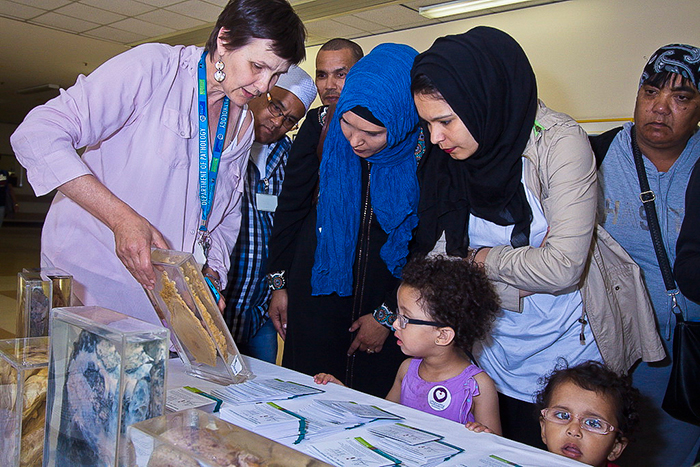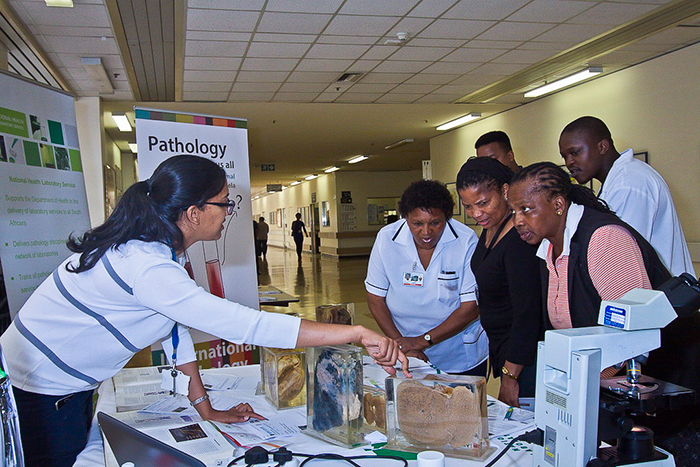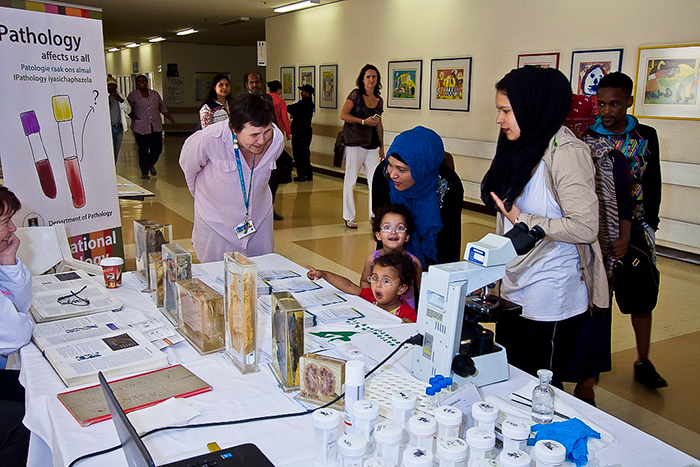What happens to my blood sample? Explaining what pathology is and what pathologists do


Almost every patient has their blood taken once or many times in a hospital visit. Where do the blood tubes go and what is done with them? This is the question the UCT Pathology Learning Centre (PLC) and National Health Laboratory Services (NHLS) sought to answer for Groote Schuur Hospital patients and staff at this year’s International Pathology Day.
Groote Schuur E floor corridor was the venue for the day, where bottled specimens from the PLC were on display including an enlarged hypertensive heart, a lung with tuberculosis, a tar-blackened lung with a carcinoma (most popular), a cirrhotic liver, a breast with carcinoma and a nephritic kidney. At the table Ms Shereen Sirkhotte and Ms Sharon Fenwick (Cytology, NHLS) stood by a microscope with cytology slides.


Patients of all ages came to look and chat, with some telling stories of battles with serious illness. The opportunity to see something tangible of different pathologies seemed to make a deep impression, even if it was not exactly the same condition as the one they were dealing with. Nursing, administration staff and hospital porters were also fascinated to see direct evidence of diseases they knew about but had never visualised before.
It was the first look down a microscope for many; “those pink and purple cancer cells are surprisingly beautiful,” one man said. There was real interest in understanding more, and it was an opportunity to link some aspects of disease to investigations done in the pathology labs.
In conjunction with the display, a small illustrated brochure titled “What happens to my blood sample?” explained the different pathology laboratories and the types of tests done in each of them. Complex information was condensensed in simple language. “No scientific background was assumed and jargon was avoided, making it a surprisingly challenging exercise,” says Dr Jane Yeats who wrote the text for the brochure.
More information on the process is available at www.mybloodsample.uct.ac.za and the next phase is information sheets on individual tests that can be printed out for patients in their home language.
The day was a major success. “Direct interaction like the Pathology Day event is the most effective way to engage patients, and next year we’d like to showcase what goes on in some different laboratories, such as microbiology, virology or genetics,” added Dr Yeats.